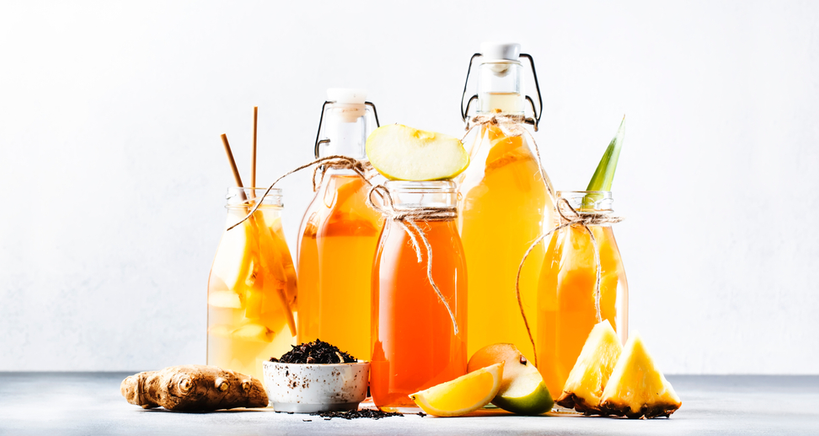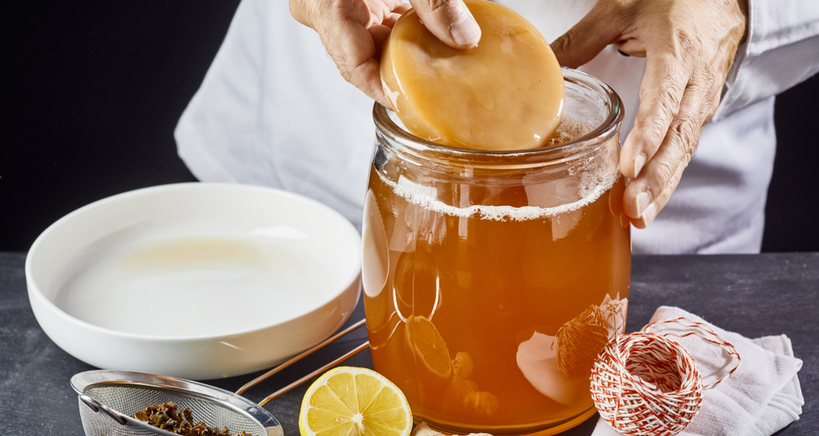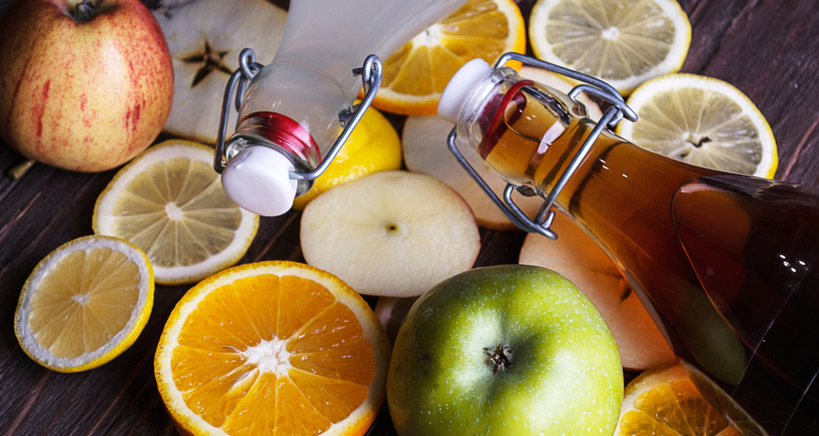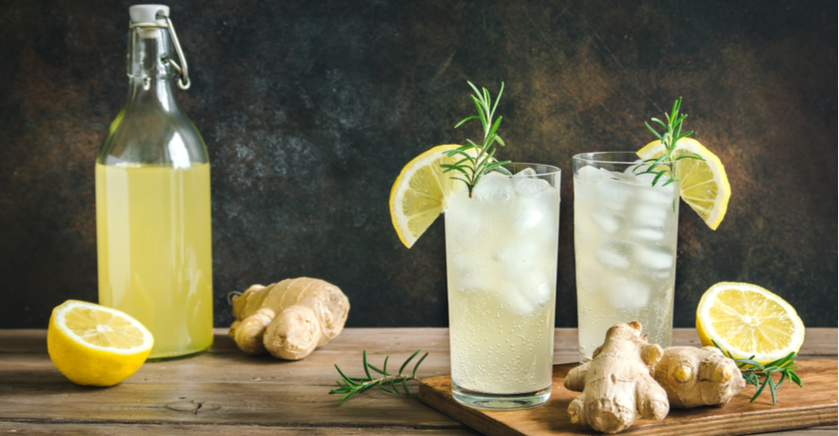
Kombucha, the fizzy, fermented tea with a distinct tangy flavor, is in high demand. Restaurateurs seeking to upgrade their beverage menu for the New Year would do well to cater to customers’ clamors for more Kombucha.
So, what is it that has the cold tea flying off grocery store shelves, appearing in home and workplace refrigerators, and making the top-four list on consumer recipe searches?
We’ll answer these questions and more as we delve into the unusual world of Kombucha.
Kombucha History
Most people don’t know that Kombucha is actually an ancient tea first brewed in China over 2,000 years ago. With the expansion of trade routes, it was introduced to Japan and Russia and made its European debut in the early 20th century. When Kombucha hit the Western world, it earned quick popularity as a health and energy drink, reaching its peak in recent years when public interest in gut health grew. At the same time, Kombucha became an increasingly favorite pick by consumers seeking an alternative to processed carbonated drinks that are typically packed with sugar or artificial sweeteners.
Kombucha and Probiotics
The quest for health-promoting products continues to soar. First came revitalizing adaptogens (ancient herbs and roots) that provide stress relief and regulate emotional states. Then came nootropics that boost brain function, followed by collagen-infused foods and drinks with beauty benefits. Most recently in industry headlines: functional ingredients that offer not only good taste but a distinct health advantage as well.
As a functional beverage, kombucha is best known for its probiotic or gut-friendly properties. Formally, probiotics have been defined as “live microorganisms which when consumed in adequate amounts as part of food confer a health benefit on the host.” In plain language, probiotics are healthy bacteria that are said to improve a variety of bodily functions, including digestion, food cravings, inflammation, and even stress and mood levels. And indeed, kombucha tea is made with the addition of a strain of bacteria and yeasts known as SCOBY (symbiotic culture of bacteria and yeasts). The latter forms a mushroom-like film on the surface of the liquid (giving kombucha the nickname ‘mushroom tea’) that is off-turning on sight. However, it is also responsible for turning the fermented sugary tea into the popular sour and fizzy drink it has become.
The Kombucha Health Connection
According to industry reports, health concerns born by the pandemic have sparked staggering growth in the fermented food market and a demand for products with immunity-boosting ingredients such as kombucha. Savvy restaurateurs and foodservice owners would do well to make sure that Kombucha earns a bright spot on their restaurant menus.
Kombucha Health Benefits
Some of Kombucha’s claim-to-fame health benefits include:
- Improved digestion
- Improved metabolism
- Improved liver function
- Improved heart health
- Boosted immunity
- Vitamins B6, B12, and B1 (thiamine), known to help the body fight depression, stabilize mood, and improve concentration
- Vitamin C, which suppresses release of the stress hormone cortisol
- Antioxidants (polyphenols) which reduce inflammation and help ward off free radical damage and disease
Making Kombucha
Here is the good news. While once upon a time you had to know how to grow your own SCOBY to make Kombucha (a somewhat intricate process that needs to be done just right), today you can purchase it ready made in many grocery or health food stores. You will also need starter kombucha tea to add to your mixture. The SCOBY can be reused several times to make several batches of kombucha. There are many websites dedicated to making and caring for SCOBY and making kombucha! Here is a simplified version to help get you started:

Instructions
- Boil black or green tea (bags or loose leaf) with sugar and water
- Cool completely
- In a glass container, (glass is the recommended vessel for making kombucha) add the SCOBY and previously made kombucha. Pour fresh cooled tea on top of container through a strainer
- Cover with a cloth or paper towel secured with a rubber band and place in a dark corner of your kitchen to ferment for 7 – 10 days, depending on the weather. During this time, the bacteria and yeasts convert the sugar into ethanol and acetic acid – giving the beverage its distinctive sour taste. Don’t worry if the SCOBY does not immediately float to the top, it will later.
- After 7 days, start tasting the kombucha. You will know it is ready if it is not sweet, has a tangy taste, and if it fizzes as you pour it into a cup. In addition, the SCOBY will be floating on the top.
- Pour into an airtight container. It can be stored for up to one week during which time the bottle should be “burped” to let out the extra gas build that adds more fizz to the drink.
- It can them be moved to fridge for an additional two weeks. When refrigerated, kombucha becomes less fizzy.
Flavored Kombucha
If all this talk about tea and bacteria isn’t quite whetting your appetite, perhaps adding some flavor to the mix will! Fortunately, there are now scores of flavored Kombucha recipes to add your chef’s repertoire and to usher in the New Year. Some of the most popular Kombucha flavors are ginger, lemon, apple, citrus, and vanilla.
 Other recipe variations include adding:
Other recipe variations include adding:
- Fresh fruits and vegetables
- Berries (blueberry, blackberry, cranberry, raspberry)
- Fruit Juices (think pineapple, apple, lemon, lime)
- Coconut Water
- Almond or Coconut Extract
- Cinnamon
- Cloves
- Spices such as basil, rosemary, mint, and thyme
Kombucha All Year Round
As the holiday season winds down, here are some ways to cater to your Komucha-loving customers year-round. For wintertime, elderberry is a delicious addition, while orange-cranberry-ginger will keep hearts warm and taste buds tingling. In the springtime, add puréed bananas, peaches, or strawberries for a slightly thicker kombucha, and enjoy experimenting with seasonal tropical fruits, such as papaya, mango, pineapple, pomegranate, or tropical fruit juice blends. Herbs and fruits also make a great combo in the form of strawberry-basil, mint-lime, and lemon-rosemary.
Best yet, have your chefs come up with a one-of-a-kind signature flavor suitable for your eatery and customers. Spread the good word of your kombucha offerings on social media, post some eye-catching photos on Instagram, and wait for the crowds and the orders to start rolling in…
Lemon Ginger Kombucha Recipe
Natural complements to kombucha, ginger and lemon flavors are easy to add to your basic recipe. If you are using fresh ginger, peel and cut the ginger root first. Alternatively, you can purchase ginger matchsticks that slip inside the bottle’s neck. Add a few teaspoons of lemon juice to taste (depending on the size of your batch) – and voila!

You can also make ginger kombucha with a ginger juice concentrate as follows:
- Steep 1/2 cup of fresh chopped ginger in 2 cups of boiling water
- Stir in some lemon juice
- Add some sugar (optional)
- Cool
- Strain the ginger and add the juice to your kombucha
Remember, when flavoring kombucha, leave fruit in no more than a day or two or fruit will keep fermenting kombucha and make it sour. Kombucha can be served with ice and garnishes of your choice! You can also serve with vodka for a refreshing cocktail!
Anyway you drink your fizz, cheers and have a Happy New Year!